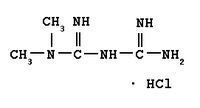FORT LAUDERDALE, Fla. -- Andrx has decided to exit the branded business altogether after waiting some 14 months for the approval of Pfizer's Cardura XL.
Andrx originally acquired the U.S. distribution rights to the extended-release alpha-blocker in November 2003 for an agreed upon $35 million. At the time, the approval for the benign prostatic hyperplasia treatment was expected to come in the summer of 2004, and projected sales were expected to reach in excess of $100 million annually, as reported by David Buck, an analyst with the Buckingham Research Group.
With Cardura XL yet to be approved and Andrx's current brand portfolio operating on a $31 million deficit for the nine months ended Sept. 30, company directors opted to focus on core competencies. "Our board and management have been evaluating our overall strategy and have concluded that Andrx should focus on ... controlled-release pharmaceuticals and distribution, as well as initiatives ... that will cause our controlled-release technologies to be employed in the development of new brand products for third parties," said Andrx Chief Executive Officer Thomas Rice.
In contrast with its branded efforts, Andrx recorded a profit of $104.8 million on revenues of $303.3 million from the sales of generic products and a profit of $37.4 million on revenues of $495 million from distribution agreements.
Andrx exercised its right to terminate the Cardura XL agreement with Pfizer when the drug was not approved by Dec. 31. Andrx is expected to receive a refund of the $10 million the company paid in connection with the deal.
The challenge for Andrx now may be in persuading another company to assume its brand portfolio. "We are unsure about Andrx's ability to find a buyer willing to pay much of a multiple to sales," remarked A.G. Edwards analyst Al Rauch. Branded products Altoprev [lovastatin extended release] and Fortamet [metformin HC1 extended release] have only three years of marketing exclusivity, and generics companies are challenging patents that extend beyond this time."
In addition, the future for the supplier's two cough-cold formulations, Entex PSE and Entex LA, is "uncertain," according to the company, amid speculation that Entex PSE may have to be pulled from the market following Adams Respiratory Therapeutics' Food and Drug Administration approval for an over-the-counter version of pseudoephedrine and guaifenesin, Mucinex D, in June 2004.
Andrx optimistically anticipates the sale of its branded business within roughly six months and has engaged Banc of America Securities to broker the deal.
COPYRIGHT 2005 Reproduced with permission of the copyright holder. Further reproduction or distribution is prohibited without permission.
COPYRIGHT 2005 Gale Group



